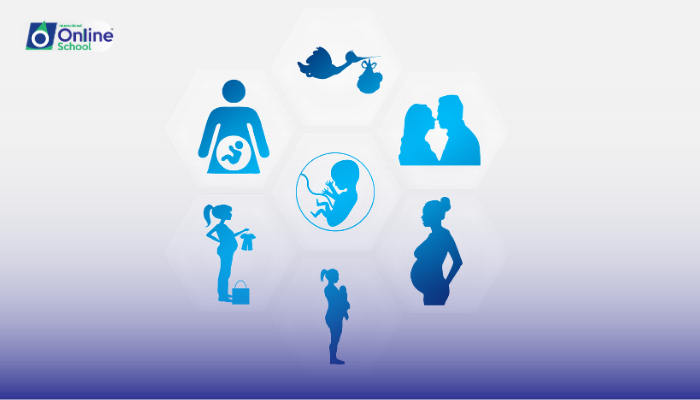
Learning Outcomes:
i. Define maternal-derived abnormalities and explain their impact on fetal development.
ii. Describe the potential consequences of rubella infection during pregnancy.
iii. Understand the role of the thyroid gland in pregnancy and its connection to neural tube defects.
iv. Explore the impact of maternal health factors on limb development in the embryo.
v. Appreciate the importance of prenatal care and interventions in mitigating risks associated with maternal-derived abnormalities.
Introduction:
Imagine a tiny artist painting a masterpiece – the human embryo. Every brushstroke, every delicate detail, is carefully crafted. But what happens when the canvas itself, the mother's health, is affected? In this lesson, we'll delve into the concept of maternal-derived abnormalities, exploring how a mother's health can influence the development of her precious creation.
i. Rubella: A Silent Threat to Development
Rubella, a seemingly harmless childhood disease, can have devastating consequences for a developing baby if contracted during pregnancy. The virus can cross the placenta and attack the baby's organs, potentially leading to:
Congenital Rubella Syndrome (CRS): This syndrome can cause deafness, blindness, heart defects, and developmental delays.
Miscarriage or stillbirth: In severe cases, rubella can lead to the loss of the pregnancy.
ii. The Crucial Role of the Thyroid Gland: A Balancing Act for Development
The thyroid gland, nestled in the neck, plays a vital role in pregnancy. It produces hormones that regulate metabolism and are essential for proper brain and nervous system development in the baby. When the thyroid gland malfunctions, it can lead to:
Neural tube defects (NTDs): These are serious birth defects affecting the brain, spinal cord, and skull.
Hypothyroidism: Insufficient thyroid hormone can lead to developmental delays and intellectual disabilities in the baby.
iii. Shaping Little Limbs: A Dance of Genes and Environment
The intricate dance of genes and environment guides the development of a baby's limbs. However, certain maternal factors can disrupt this delicate process:
Nutrient deficiencies: Folic acid deficiency can increase the risk of limb malformations like spina bifida.
Diabetes: Poorly managed diabetes can lead to limb defects and other birth complications.
Certain medications: Some medications taken during pregnancy can have adverse effects on limb development.
iv. Prenatal Care: A Bridge of Hope and Prevention
While the impact of some maternal-derived abnormalities cannot be fully reversed, prenatal care plays a crucial role in mitigating risks and optimizing outcomes:
Vaccinations: Rubella vaccination before pregnancy can prevent CRS.
Nutritional counseling: Ensuring adequate folic acid and other essential nutrients can reduce NTD risk.
Monitoring and interventions: Regular prenatal checkups and timely interventions can help manage thyroid function and other health conditions.
Understanding maternal-derived abnormalities is not about placing blame but rather about empowering mothers and healthcare professionals to work together. By acknowledging the potential impacts, embracing preventive measures, and seeking timely care, we can create a bridge of hope for a healthy and happy journey for both mother and child. Remember, the canvas of pregnancy is complex, but with knowledge, vigilance, and support, mothers can paint a masterpiece of life, resilient and full of wonder.